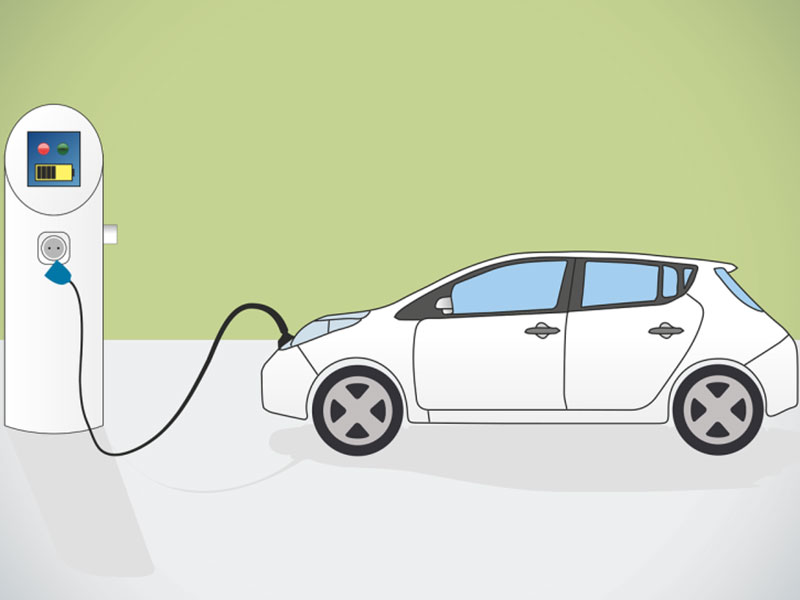EPOC 2030-2050: Energy transition models for Belgium with time horizons 2030 and 2050
18013
From 2018 to 2023
The EPOC project investigates energy transition modelling in Belgium, with a focus on the 2030s and 2050s. TML is analysing the relationship between energy and transport, including updating the TREMOVE model and running simulations, as well as investigating the acceptance of Vehicle-to-Grid (V2G) by motorists.
The EPOC project (Energy modelling framework for POlicy support towards a Cost-effective and Sustainable society) deals with energy transition modelling at the Belgian level with 2030 and 2050 as time horizons. To this end, 13 Flemish, Walloon, and Brussels research partners are joining forces.
Within this consortium, led by EnergyVille/Vito, TML analyses the relationship between energy and transport, in particular:
1. The development of an integrated transport model and model simulations
As part of the EPA project, TML further developed and updated the existing TREMOVE model. This included analyses serving as input for other EPOC partners, in particular the derivation of daily travel profiles of motorists and the evolution of transport costs for different vehicle technologies. We also fed the TREMOVE model with micro-level data.
With this adapted model, we ran a number of simulations. In the first simulation, we analysed the growth of the number of electric cars until 2030 and addressed the distributional effects of this evolution. In the first period, electrification is expected to be via the corporate car fleet, which is mainly concentrated among the higher income classes. Any additional subsidy or incentive for the company car fleet will therefore benefit high-income households much more than low-income households. The cost of electric cars is expected to fall rapidly after 2026, which would lead to rapid and more dispersed growth of the electric car fleet. As a result, in the future, the distribution of the electric vehicle fleet by income will start to look more like the distribution of the current fleet.
In a second simulation, we took a closer look at the fiscal and social consequences of electrification. We take 2030 as the reference year for our simulation, which we compared with the base year 2021 of our simulation. We see that the expected rapid decline in the cost of electric cars will lead to lower overall car transport costs by 2030. Without tax reform, tax revenues from car transport are expected to fall rapidly. We estimate that tax revenue from private car transport could fall by €1.5 billion by 2030. Electric cars have smaller environmental costs than combustion engine cars, but similar or higher other external costs (congestion, accidents, and pressure on public space). Without reform, one can expect a reverse modal shift and higher congestion costs on the network. Therefore, tax reform is appropriate. We illustrated this for a rush-hour charge of €0.10 on the entire Belgian transport network. Such a charge compensates for the loss of tax revenue in 2030. Moreover, it significantly reduces congestion on the network. We emphasised the need for additional reforms of this road charge and post-2030 taxes on the purchase and ownership of electric cars.
2. The potential for the provision of Vehicle-to-Grid (V2G) services by motorists in Belgium
For energy transition and climate change mitigation, it is important to decarbonise the Belgian vehicle fleet. In the coming years, the Belgian vehicle fleet will be increasingly electrified. This poses several challenges, including balancing electricity supply and demand. At the same time, important opportunities arise. Most cars only drive for a limited part of the day. While the cars are parked, the battery of electric cars can serve as an energy source for other purposes. V2G is a smart, bi-directional charging system. Cars equipped for V2G can charge their battery when electricity demand and electricity prices are low. During periods of high electricity demand and high prices, the car's battery can supply energy to the grid. In doing so, the car can be discharged to a predetermined minimum level, so that the driver can always use their car when needed.
V2G is promising, but there are still several barriers to rollout. A prerequisite for the success and economic viability of V2G is wide acceptance by electric car users and their participation in the V2G system. Therefore, TML conducted a survey within EPOC in which 2,500 respondents from across the country were asked about their purchase intentions, their familiarity with electric cars and charging technologies, their driving behaviour, and their preferences regarding vehicle types and charging systems.
Analysis of the survey shows that motorists' interest in V2G is currently quite low in Belgium. This is mainly caused by two factors. On the one hand, the technology is largely unknown, making it difficult for motorists to assess its full potential and making them reluctant to adopt it. On the other hand, Belgian motorists have a strong fear of a flat battery during their drive. This is especially true for high-mileage motorists.
A successful implementation of V2G in Belgium thus requires significant efforts to make motorists more familiar with the technology. V2G contracts must also be designed in such a way that the drivers' desired driving distance can always be guaranteed. Respondents see a high guaranteed minimum driving range as more important than financial compensation (unless it is large).
3. Literature review on equity and distributional aspects in transport pricing policies
In a review article in the Handbook on Transport Pricing and Financing (Edward Elgar Publishing), we summarise lessons from economic theory on how to consider distributive considerations in transport pricing policies. In addition, we summarise the findings of applied studies, on the one hand for existing applications of road pricing, and on the other based on modelling studies. We also consider the consequences of a growing share of electric cars. Finally, we indicate how to evaluate the distributional effects of transport policy in an objective way.
The EPOC project (Energy modelling framework for POlicy support towards a Cost-effective and Sustainable society) deals with energy transition modelling at the Belgian level with 2030 and 2050 as time horizons. To this end, 13 Flemish, Walloon, and Brussels research partners are joining forces.
Within this consortium, led by EnergyVille/Vito, TML analyses the relationship between energy and transport, in particular:
- An update of the TREMOVE model and simulations of the future development of vehicle stock and transport demand.
- Deriving daily travel profiles of motorists.
- A stated preference survey on the potential acceptability and use of electric car charging systems.
- A literature review on equity and distributional aspects in transport pricing policies.
1. The development of an integrated transport model and model simulations
As part of the EPA project, TML further developed and updated the existing TREMOVE model. This included analyses serving as input for other EPOC partners, in particular the derivation of daily travel profiles of motorists and the evolution of transport costs for different vehicle technologies. We also fed the TREMOVE model with micro-level data.
With this adapted model, we ran a number of simulations. In the first simulation, we analysed the growth of the number of electric cars until 2030 and addressed the distributional effects of this evolution. In the first period, electrification is expected to be via the corporate car fleet, which is mainly concentrated among the higher income classes. Any additional subsidy or incentive for the company car fleet will therefore benefit high-income households much more than low-income households. The cost of electric cars is expected to fall rapidly after 2026, which would lead to rapid and more dispersed growth of the electric car fleet. As a result, in the future, the distribution of the electric vehicle fleet by income will start to look more like the distribution of the current fleet.
In a second simulation, we took a closer look at the fiscal and social consequences of electrification. We take 2030 as the reference year for our simulation, which we compared with the base year 2021 of our simulation. We see that the expected rapid decline in the cost of electric cars will lead to lower overall car transport costs by 2030. Without tax reform, tax revenues from car transport are expected to fall rapidly. We estimate that tax revenue from private car transport could fall by €1.5 billion by 2030. Electric cars have smaller environmental costs than combustion engine cars, but similar or higher other external costs (congestion, accidents, and pressure on public space). Without reform, one can expect a reverse modal shift and higher congestion costs on the network. Therefore, tax reform is appropriate. We illustrated this for a rush-hour charge of €0.10 on the entire Belgian transport network. Such a charge compensates for the loss of tax revenue in 2030. Moreover, it significantly reduces congestion on the network. We emphasised the need for additional reforms of this road charge and post-2030 taxes on the purchase and ownership of electric cars.
2. The potential for the provision of Vehicle-to-Grid (V2G) services by motorists in Belgium
For energy transition and climate change mitigation, it is important to decarbonise the Belgian vehicle fleet. In the coming years, the Belgian vehicle fleet will be increasingly electrified. This poses several challenges, including balancing electricity supply and demand. At the same time, important opportunities arise. Most cars only drive for a limited part of the day. While the cars are parked, the battery of electric cars can serve as an energy source for other purposes. V2G is a smart, bi-directional charging system. Cars equipped for V2G can charge their battery when electricity demand and electricity prices are low. During periods of high electricity demand and high prices, the car's battery can supply energy to the grid. In doing so, the car can be discharged to a predetermined minimum level, so that the driver can always use their car when needed.
V2G is promising, but there are still several barriers to rollout. A prerequisite for the success and economic viability of V2G is wide acceptance by electric car users and their participation in the V2G system. Therefore, TML conducted a survey within EPOC in which 2,500 respondents from across the country were asked about their purchase intentions, their familiarity with electric cars and charging technologies, their driving behaviour, and their preferences regarding vehicle types and charging systems.
Analysis of the survey shows that motorists' interest in V2G is currently quite low in Belgium. This is mainly caused by two factors. On the one hand, the technology is largely unknown, making it difficult for motorists to assess its full potential and making them reluctant to adopt it. On the other hand, Belgian motorists have a strong fear of a flat battery during their drive. This is especially true for high-mileage motorists.
A successful implementation of V2G in Belgium thus requires significant efforts to make motorists more familiar with the technology. V2G contracts must also be designed in such a way that the drivers' desired driving distance can always be guaranteed. Respondents see a high guaranteed minimum driving range as more important than financial compensation (unless it is large).
3. Literature review on equity and distributional aspects in transport pricing policies
In a review article in the Handbook on Transport Pricing and Financing (Edward Elgar Publishing), we summarise lessons from economic theory on how to consider distributive considerations in transport pricing policies. In addition, we summarise the findings of applied studies, on the one hand for existing applications of road pricing, and on the other based on modelling studies. We also consider the consequences of a growing share of electric cars. Finally, we indicate how to evaluate the distributional effects of transport policy in an objective way.


